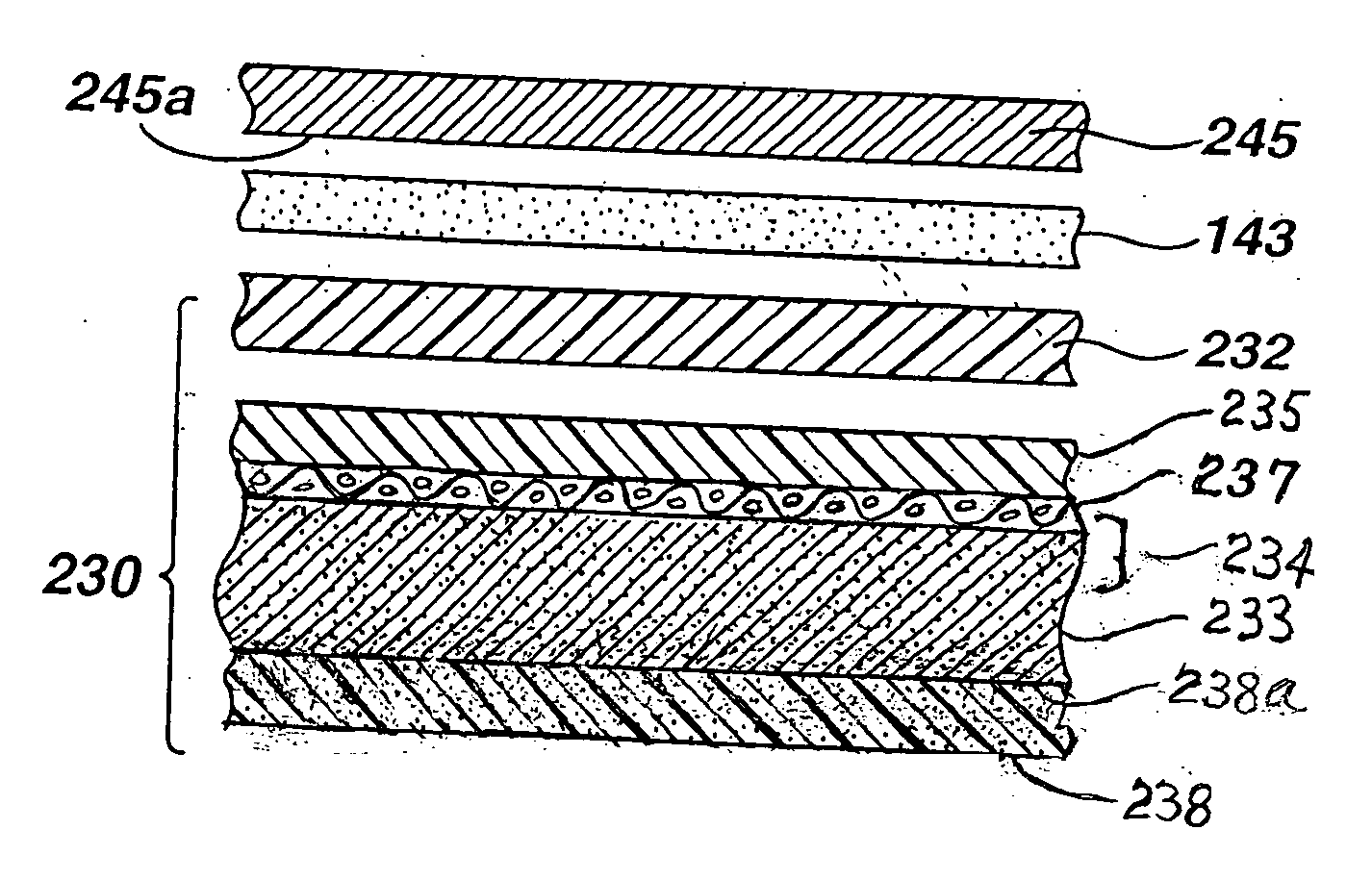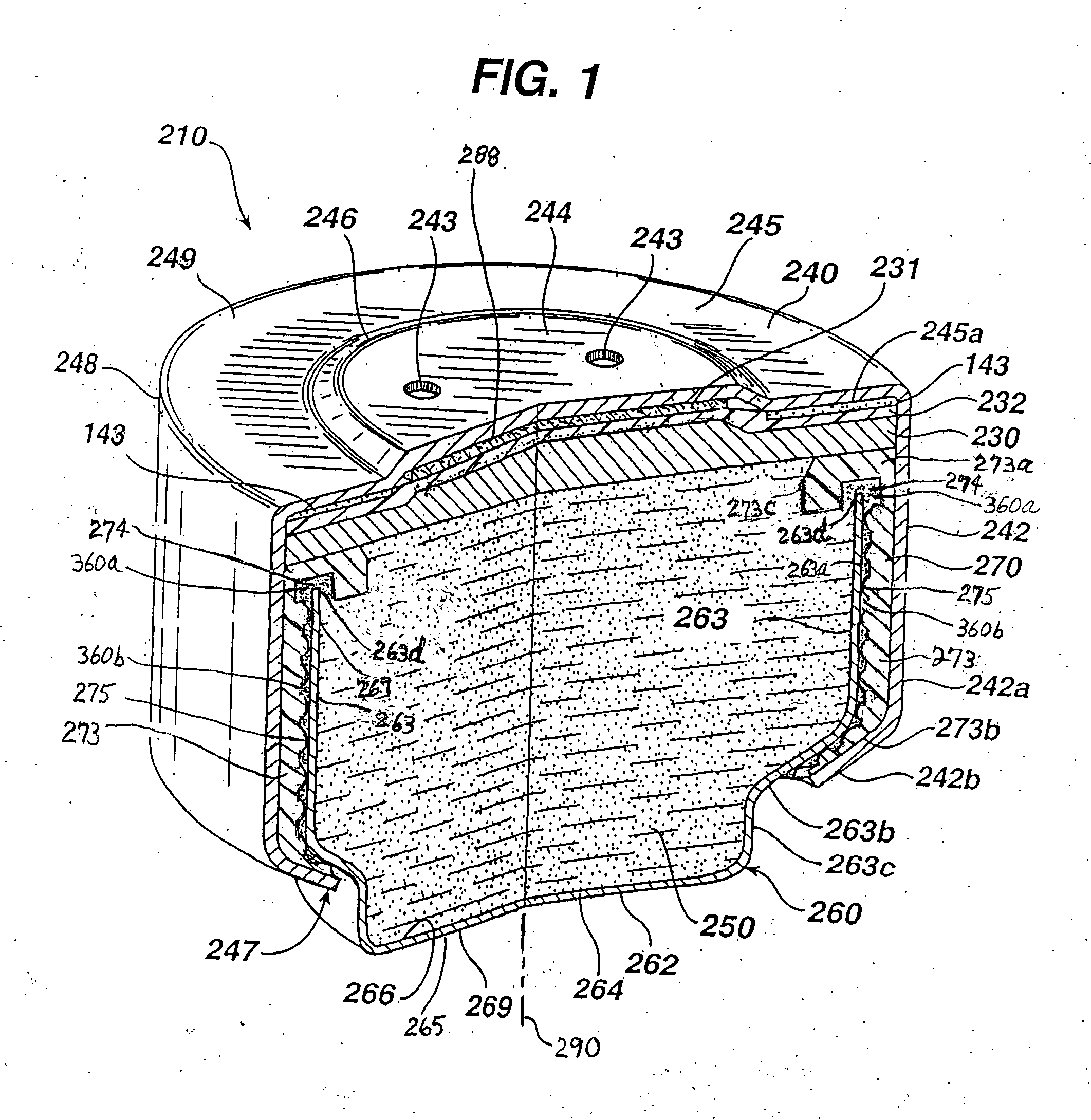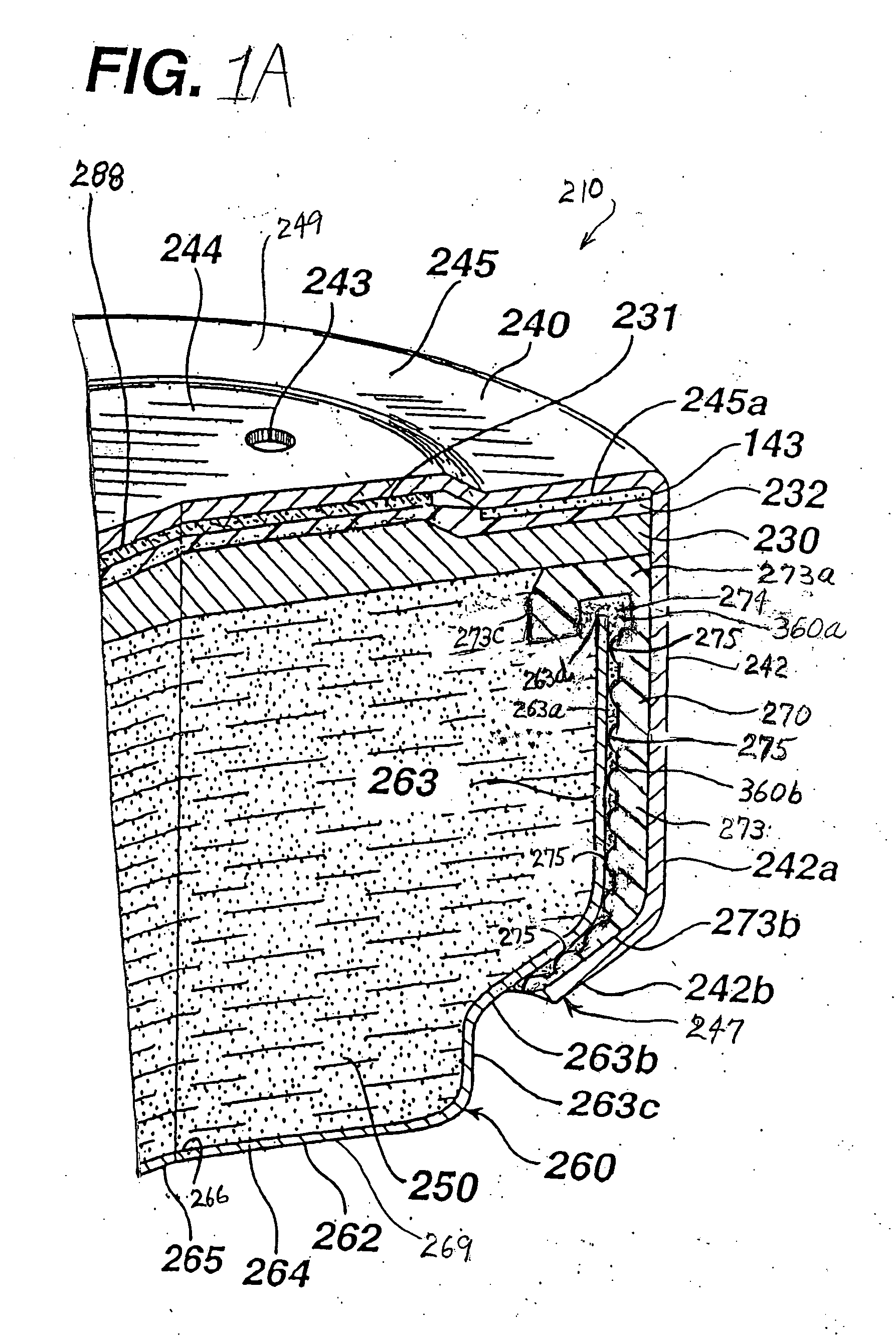Zinc/air cell
a zinc/air cell and air technology, applied in the field of metal/air cells, can solve the problems of increased internal cell pressure, increased gassing, and weakening of the tight seal between the anode casing side wall and the surrounding insulator ring, so as to reduce the chance of electrolyte leakage caused or promoted, and the effect of sealing protection
- Summary
- Abstract
- Description
- Claims
- Application Information
AI Technical Summary
Benefits of technology
Problems solved by technology
Method used
Image
Examples
Embodiment Construction
[0042] The invention is directed principally to air depolarized electrochemical cells. Such cells have a metal anode, typically comprising zinc within an anode casing, and there is an air inlet to the cathode material within the cathode casing. The cell is commonly referred to as a metal / air or air-depolarized cell, and more typically a zinc / air cell.
[0043] The zinc / air cell of the invention is desirably in the form of a miniature button cell. It has particular application as a power source for small electronic devices such as hearing aids. But such cells may also be used to power other electronic devices. The miniature zinc / air button cell of the invention typically has a disk-like cylindrical shape of diameter between about 4 and 20 mm, for example, between about 4 and 16 mm, preferably between about 4 and 12 mm. The miniature zinc / air button cell has a height between about 2 and 9 mm, preferably between about 2 and 6 mm. The miniature zinc / air cell typically has an operating loa...
PUM
 Login to View More
Login to View More Abstract
Description
Claims
Application Information
 Login to View More
Login to View More - R&D
- Intellectual Property
- Life Sciences
- Materials
- Tech Scout
- Unparalleled Data Quality
- Higher Quality Content
- 60% Fewer Hallucinations
Browse by: Latest US Patents, China's latest patents, Technical Efficacy Thesaurus, Application Domain, Technology Topic, Popular Technical Reports.
© 2025 PatSnap. All rights reserved.Legal|Privacy policy|Modern Slavery Act Transparency Statement|Sitemap|About US| Contact US: help@patsnap.com



